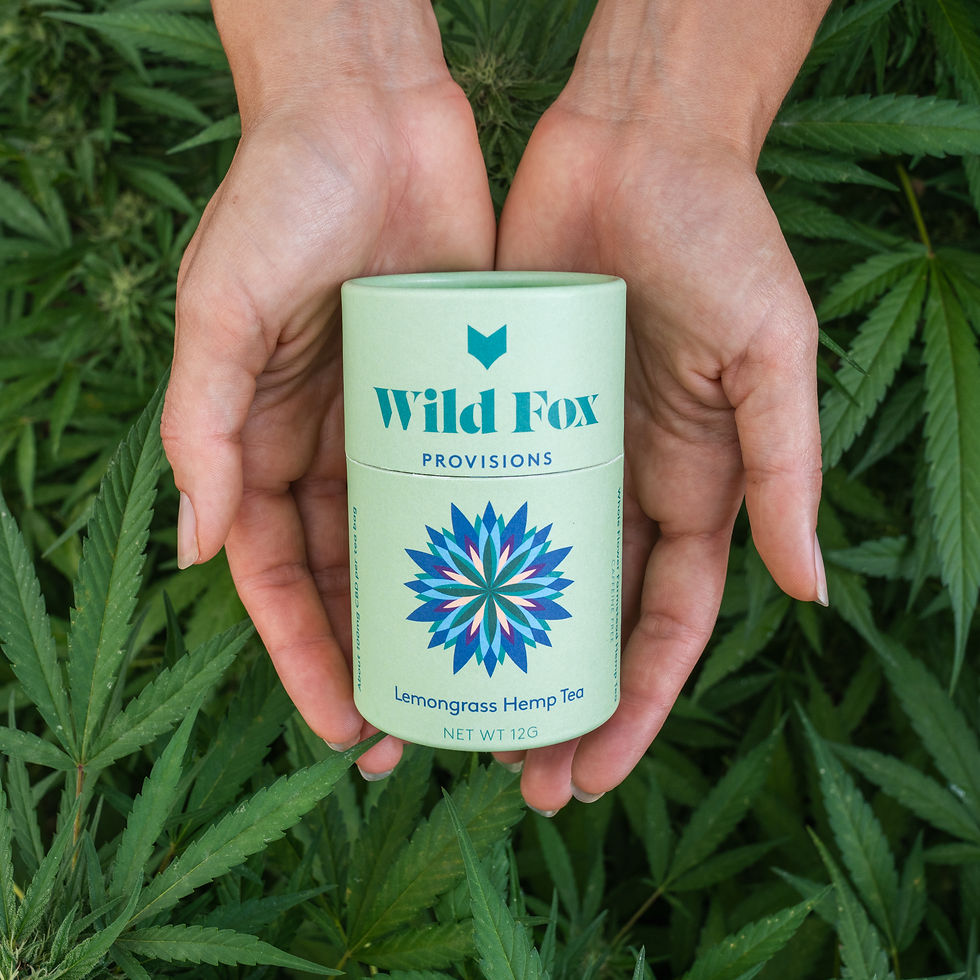Principles of Regenerative Agriculture Practices
- Wild Fox Provisions

- Oct 17
- 4 min read
When we first started exploring sustainable ways to farm, we quickly realized that regenerative agriculture is more than just a buzzword. It’s a holistic approach that nurtures the soil, supports biodiversity, and ultimately produces healthier plants and products. If you’re curious about how regenerative farming methods can transform the way we cultivate hemp and other crops, you’re in the right place. Let’s dive into the core principles that make regenerative agriculture so powerful and why it matters for organic, farm-grown hemp products.
What Are Regenerative Farming Methods?
Regenerative farming methods focus on working with nature rather than against it. These practices aim to reduce environmental impact, improve the soil, and promote biodiversity. Unlike conventional farming, which often relies heavily on synthetic chemicals and intensive tillage, regenerative methods prioritize soil health, water conservation, and natural pest control.
Some common regenerative farming techniques include:
Cover cropping: Planting specific crops to protect and enrich the soil during off-seasons.
Crop rotation: Changing the types of crops grown in a field to prevent nutrient depletion and reduce pests.
Reduced tillage: Minimizing soil disturbance to maintain its structure and microbial life.
Integrated pest management: Using natural predators and organic treatments to manage pests.
These methods not only help the environment but also improve the quality and resilience of the crops. For hemp, this means plants that are more robust and rich in beneficial compounds.

The Core Principles of Regenerative Agriculture
Regenerative agriculture goes a step beyond traditional organic farming by actively restoring and enhancing the ecosystem. It’s about creating a self-sustaining cycle that benefits the soil, plants, animals, and people. Here are the key principles that guide this approach:
1. Soil Health is Everything
Healthy soil is the foundation of regenerative farming. It’s alive with microorganisms, fungi, and organic matter that work together to support plant growth. Practices like composting, adding organic amendments, and avoiding chemical fertilizers help build this living soil.
2. Diversity is Key
Planting a variety of crops and integrating animals into the system encourages biodiversity. This diversity helps control pests naturally, improves soil structure, and creates a balanced ecosystem.
3. Minimal Soil Disturbance
Tilling can disrupt soil life and lead to erosion. Regenerative farmers use no-till or low-till methods to keep the soil intact and maintain its natural layers.
4. Cover Crops and Mulching
Cover crops protect the soil from erosion, add nutrients, and suppress weeds. Mulching keeps moisture in the soil and provides habitat for beneficial insects.
5. Water Management
Efficient water use and techniques like swales or rain gardens help capture and retain water, reducing runoff and drought stress.
By following these principles, farmers can restore degraded land, increase carbon sequestration, and produce nutrient-dense crops including hemp.

Why Are Some Farmers Against Regenerative Farming?
You might wonder, if regenerative agriculture is so beneficial, why isn’t everyone on board? There are a few reasons some farmers hesitate to adopt these practices:
Initial Costs and Learning Curve: Transitioning to regenerative methods can require new equipment, seeds, and training. This upfront investment can be daunting.
Short-Term Yield Concerns: Some farmers worry that yields might drop during the transition period before the soil fully recovers.
Market and Policy Barriers: Conventional agriculture is often supported by subsidies and infrastructure that don’t yet favor regenerative practices.
Risk Aversion: Farming is already risky, and changing long-established methods can feel uncertain.
Despite these challenges, many farmers who commit to regenerative agriculture find that the long-term benefits—healthier soil, reduced input costs, and better crop resilience—far outweigh the initial hurdles.
How Regenerative Agriculture Benefits Hemp and Its Products
Hemp is a remarkable plant with many uses, from textiles to wellness products. When grown using regenerative agriculture practices, hemp can be even more beneficial. Here’s how:
Higher Nutrient Density: Healthy soil means hemp plants absorb more nutrients, resulting in richer cannabinoids and terpenes.
Reduced Chemical Residues: Avoiding synthetic pesticides and fertilizers ensures cleaner, safer hemp products.
Improved Soil Carbon Storage: Hemp’s deep roots help sequester carbon, contributing to climate change mitigation.
Enhanced Biodiversity: Diverse farm ecosystems support pollinators and beneficial insects, which can improve hemp yields and quality.
For those seeking organic, farm-grown hemp products, these benefits translate into natural wellness solutions that are both effective and environmentally responsible.

Getting Started with Regenerative Agriculture Practices
If you’re interested in supporting or even trying regenerative agriculture, here are some practical steps to consider:
Choose Organically Hemp: Look for products grown with regenerative principles and certified organic standards.
Support Local Farms: Buying from local producers helps promote sustainable farming in your community.
Learn About Soil Health: Understanding the basics of soil biology can deepen your appreciation for regenerative methods.
Advocate for Policy Change: Encourage policies that support regenerative agriculture and sustainable farming.
Experiment in Your Garden: Even small-scale gardeners can try cover cropping, composting, reduced tillage, and enjoy the delicous rewards of their labor.
By making informed choices, you contribute to a healthier planet and better-quality hemp products.
We hope this gives you a clearer picture of how regenerative agriculture and organic farming methods work hand in hand to create a sustainable future for hemp cultivation. It’s a journey worth supporting, especially when it leads to natural, organic products that promote wellness and respect the earth.
If you want to explore more about these practices and find high-quality hemp products grown with care, check out our website. Here’s to nurturing the soil and ourselves, one plant at a time!



